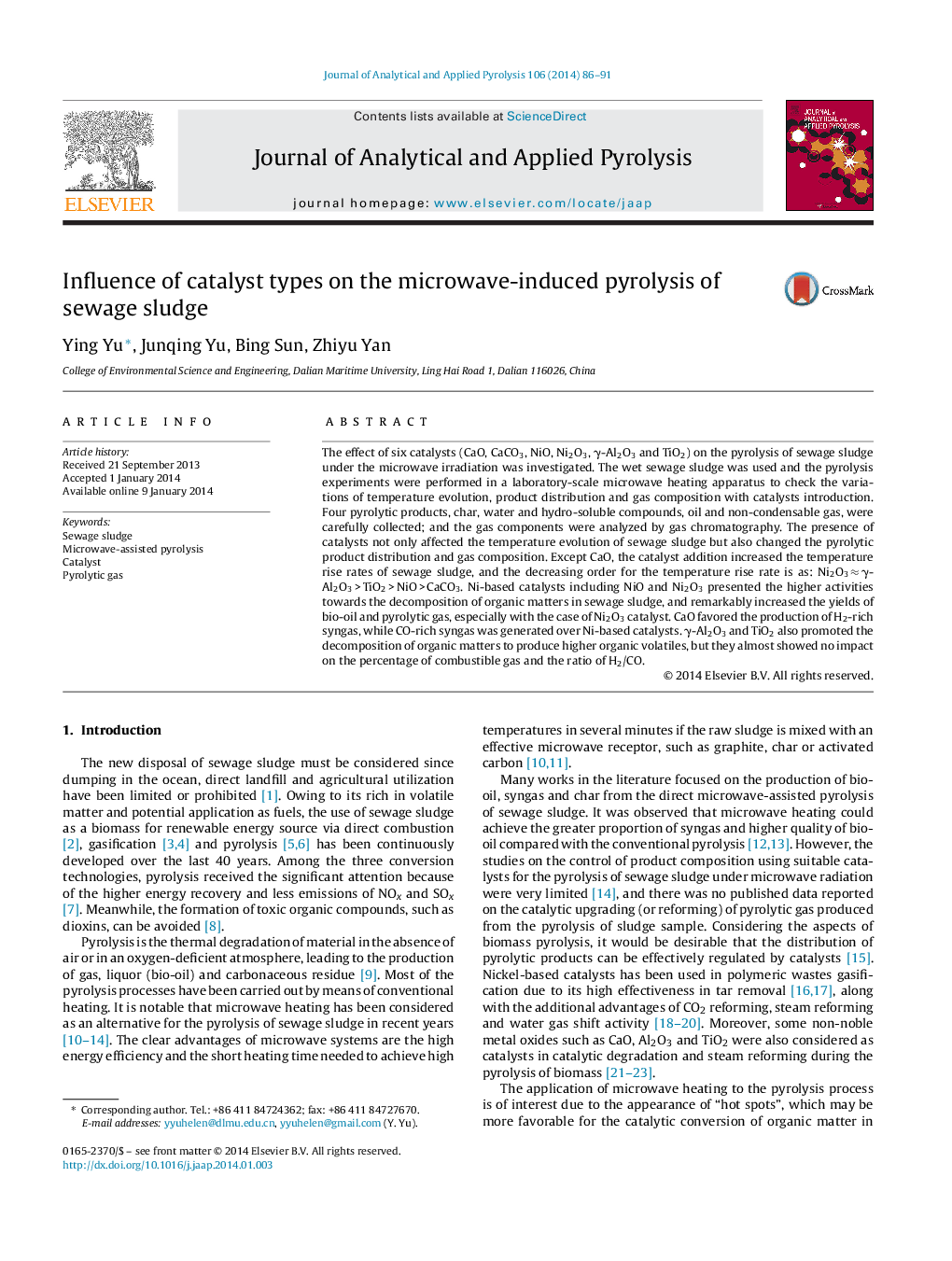| کد مقاله | کد نشریه | سال انتشار | مقاله انگلیسی | نسخه تمام متن |
|---|---|---|---|---|
| 1196860 | 1492971 | 2014 | 6 صفحه PDF | دانلود رایگان |
• The catalyst affected the temperature evolution of sewage sludge and changed the pyrolytic product distribution.
• The introduction of Ni-based catalysts remarkably increased the yields of bio-oil and syngas.
• γ-Al2O3 and TiO2 promoted the decomposition of organic matters to produce higher organic volatiles.
• CaO favored the production of H2-rich syngas, while CO-rich syngas was generated over Ni-based catalysts.
The effect of six catalysts (CaO, CaCO3, NiO, Ni2O3, γ-Al2O3 and TiO2) on the pyrolysis of sewage sludge under the microwave irradiation was investigated. The wet sewage sludge was used and the pyrolysis experiments were performed in a laboratory-scale microwave heating apparatus to check the variations of temperature evolution, product distribution and gas composition with catalysts introduction. Four pyrolytic products, char, water and hydro-soluble compounds, oil and non-condensable gas, were carefully collected; and the gas components were analyzed by gas chromatography. The presence of catalysts not only affected the temperature evolution of sewage sludge but also changed the pyrolytic product distribution and gas composition. Except CaO, the catalyst addition increased the temperature rise rates of sewage sludge, and the decreasing order for the temperature rise rate is as: Ni2O3 ≈ γ-Al2O3 > TiO2 > NiO > CaCO3. Ni-based catalysts including NiO and Ni2O3 presented the higher activities towards the decomposition of organic matters in sewage sludge, and remarkably increased the yields of bio-oil and pyrolytic gas, especially with the case of Ni2O3 catalyst. CaO favored the production of H2-rich syngas, while CO-rich syngas was generated over Ni-based catalysts. γ-Al2O3 and TiO2 also promoted the decomposition of organic matters to produce higher organic volatiles, but they almost showed no impact on the percentage of combustible gas and the ratio of H2/CO.
Journal: Journal of Analytical and Applied Pyrolysis - Volume 106, March 2014, Pages 86–91
